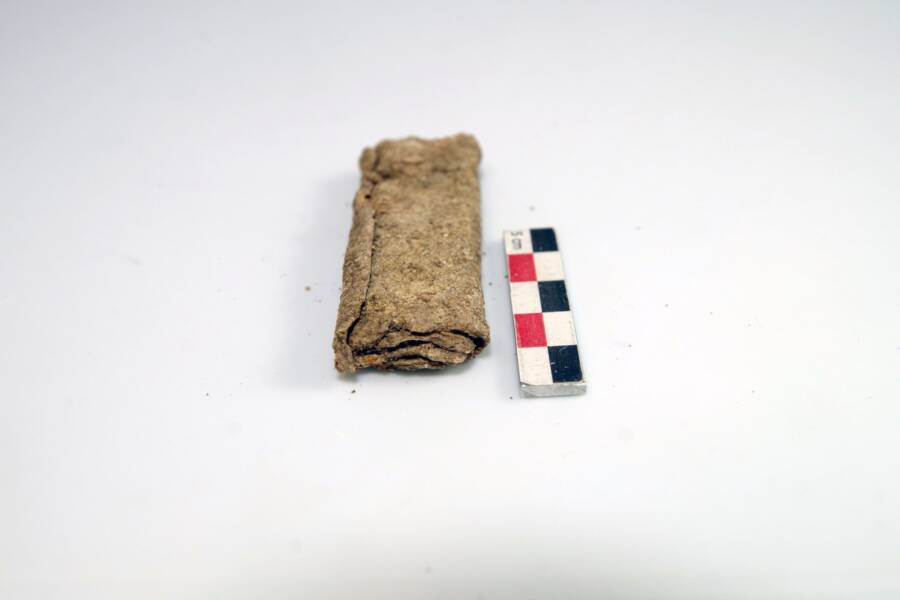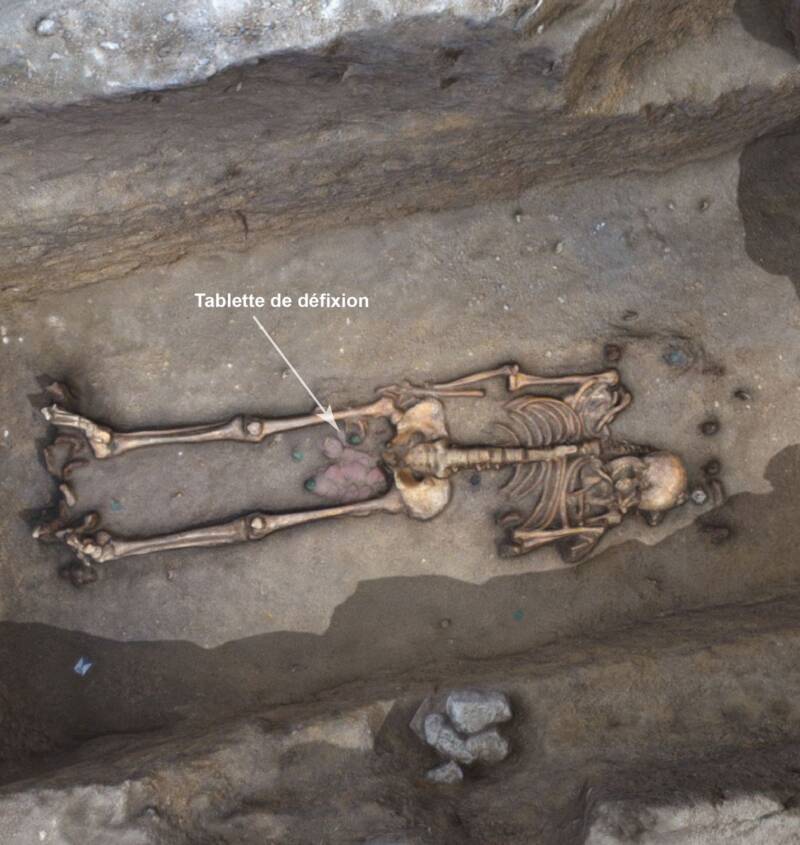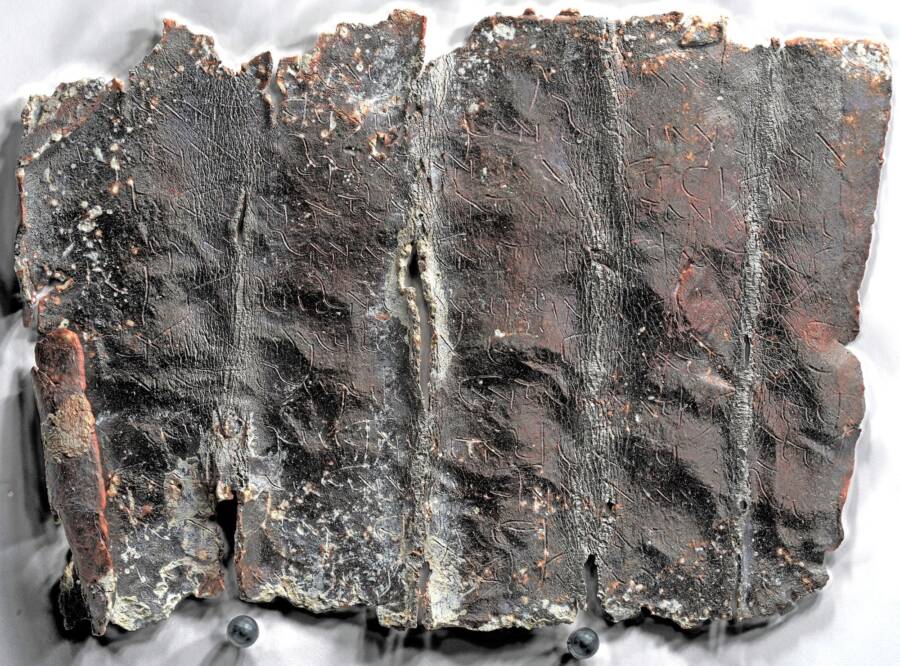A 2,000-year-old necropolis found beneath a former hospital in Orléans, France, held more than 60 graves and 21 "curse tablets," including one written in the extinct Celtic language of Gaulish.

Service Archéologie Orléans (SAVO)A Roman curse tablet as it was found inside a grave in an ancient Roman necropolis in France.
In 2022, researchers excavating the site of an 18th-century hospital in Orléans, France, uncovered a Roman necropolis containing more than 60 graves. Some of the burials included “curse tablets,” which were used to call for divine vengeance or request wishes from the gods.
Now, scientists have deciphered the message inscribed on one of the tablets, which was written in an extinct language called Gaulish. It invoked Mars, the Roman god of war, and asked the deity to curse a series of individuals.
As translations of the remaining 20 tablets continue, researchers hope to uncover invaluable historical insights into Gallic culture, ancient religion, and the Roman conquest of Gaul.
Archaeologists In France Discover A Roman Curse Tablet In A Grave

Service Archéologie Orléans (SAVO)One grave held the remains of a man buried with a vase, coins, and a curse tablet between his legs.
In 2022, archaeologists began excavating the 18th-century Porte Madeleine Hospital in Orléans, where they discovered a Roman necropolis that was used between the first and third centuries C.E. The necropolis included more than 60 graves of adult men arranged in a single row along a wall, which was atypical for the time. Experts believe the men may have shared a profession or had some other type of connection.
Within these graves, archaeologists found traces of painted wooden coffins and artifacts like vases and coins. However, their most exciting discovery was 21 “curse tablets,” or small sheets of lead that were inscribed with wishes or curses.
Ancient Romans used these sheets to speak to their deities. After writing their message on the lead plate, they would roll it up, pierce it with a nail, and bury it in a grave or place it in a well to send to the gods.
So far, researchers have translated just one of these curse tablets — and it came with more than one surprise.
Translating The Ancient Roman Curse Tablet

Service Archéologie Orléans (SAVO)An unrolled curse tablet written in the extinct Gaulish language.
In one grave at the former hospital site, archaeologists found the remains of a man who had been buried with a vase, some coins, and a curse tablet between his legs. After unrolling the lead sheet, researchers discovered it had been written in Gaulish, an extinct Celtic language.
The tablet was seemingly addressed to Mars, the Roman god of war. Linguistics experts have now translated it, and, according to the Service Archéologie Orléans, they believe it reads:
To Mars the Royal, who pierces names
It is the bewitchment of these men and women below (named)
who accomplished the unfortunate and unjust feat
and also all those who were accomplices of these men and women
The tablet then lists a series of names.
Researchers are now working to translate a second curse tablet. Meanwhile, the excavations of the necropolis are expected to wrap up at the end of this month, while studies of the remains, tablets, and other artifacts uncovered at the site will continue for years to come.
After reading about the Roman curse tablets found in a necropolis in France, go inside the curse of King Tut’s tomb and how it supposedly killed at least nine people. Then, read about 11 allegedly cursed movie productions and the strange incidents that occurred during filming.





